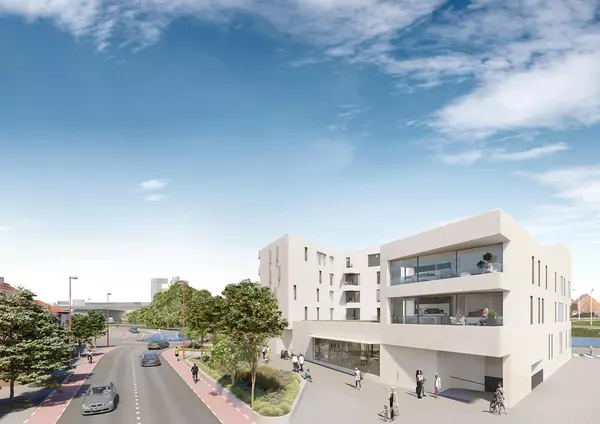Transit-Oriented Developments: How Strategic Locations Can Minimize Risk and Drive Resilient Returns
Transit-oriented developments (TODs) have emerged as one of the most durable and attractive real estate strategies in both residential and mixed-use markets. These developments cluster housing, retail, office, and community amenities around major transit infrastructure, including subways, light rail, commuter rail, or bus rapid transit, creating high-density nodes of urban activity.
Transit-oriented developments (TOD) are not new. However, while their benefits in terms of convenience and increased property values are well recognized, their role in shaping resilient returns is becoming more evident. By minimizing investor risk, TODs can deliver returns that hold up through both cyclical downturns and long-term structural shifts in the real estate market.
The appeal is not simply that transit-linked assets trade at premiums, although that is a significant factor, but that their value tends to hold even when broader market conditions shift. TODs benefit from structural advantages such as persistent demand from tenants and buyers, policy-driven zoning certainty that reduces entitlement risk, and the flexibility of mixed-use formats that combine residential, retail, and community amenities. These factors create resilience from the development stage, allowing projects to maintain both marketability and long-term income stability.
For example, in Toronto, the Ontario Line and other rapid transit expansions are creating new high-demand corridors; development funds like McGillivray Capital Partners (MCP) illustrate how this structural advantage can be harnessed in practice. By acquiring development sites near transit nodes and deploying capital across multiple projects, MCP reduces exposure to any single asset or market. Combined with zoning certainty and well-designed mixed-use programming, this approach allows TOD-focused developments to offer investors more predictable lease-up, sales, and long-term returns, even through cyclical downturns.
Risk Mitigation
Location as a Risk Buffer
The first and most obvious strength of TODs lies in the inherent demand that comes with connectivity. Properties located within walking distance of rapid transit consistently show higher absorption, stronger rent growth, and lower vacancy. That is because they serve a wider catchment of residents and tenants who value reduced commuting time, lower transportation costs, and access to a broader range of employment and amenities.
This “location premium” is not a cyclical quirk but a structural feature. Many locational factors can create short-term premiums but lack the long-term stability and resilience that transit access provides. Lifestyle trends, such as neighbourhoods built around arts, dining, or nightlife, can lose appeal once the scene shifts. Demographic clustering, like areas popular with students or young professionals, may see demand soften as those groups move on. Retail anchors, including malls or entertainment venues, can lose their pull if consumer habits change or the anchor shuts down. Perceived prestige in “hot” neighbourhoods often fades as affordability pressures or overdevelopment erode exclusivity. Even school catchments, which drive demand when rankings are strong, can lose value if performance declines or new schools open nearby. Transit access, however, functions as hard infrastructure; once established, it provides a permanent advantage that supports demand across generations and market conditions.
In downturns, suburban or car-dependent sites see sharper drops in occupancy and value as transportation costs become a greater burden. By contrast, a rental apartment or retail property beside a transit station or LRT stop offers tangible household savings. That helps stabilize tenancy, which in turn protects income streams for owners.
This more permanent advantage that transit contributes to location favourability is a key reason MCP targets these sites, providing a potential added measure of investment security.
Policy Certainty and Entitlement Risk
Entitlement risk is the possibility that a developer may be unable to secure the required municipal or government approvals to build a project according to the intended plan. For developers, regulatory alignment is a critical way to reduce risk. One of the ways TODs reduce development risk is by anchoring projects in regulatory frameworks that are less likely to change in ways that undermine the project.
Across Canada, provinces have created policies to encourage higher-density development near transit corridors. These frameworks reduce friction by clarifying what can be built, where, and at what density. In many cases, municipalities are required to bring zoning into conformity with density targets, effectively guaranteeing the right to build more intensively. In Ontario, for example, this is formalized through Major Transit Station Areas, where zoning and density policies are explicitly aligned with transit infrastructure. Development funds like MCP’s strategically target these areas, leveraging the combination of high-density allowances and zoning certainty to secure sites that are primed for both strong demand and long-term value retention. By focusing on these transit-linked nodes, MCP helps reduce entitlement risk.
This clarity lowers both time and political risk. Developers generally face fewer rezoning hurdles and can often leverage municipal or transit agency investment in surrounding infrastructure, although local conditions and project-specific requirements still apply. Transit agencies and municipalities often contribute to surrounding infrastructure, such as streetscapes, utilities, and mobility hubs, which further reduces the private development burden.
This does not eliminate execution risk; however, it helps to shift the odds in the developer’s favour. By contrast, greenfield projects outside transit corridors often encounter infrastructure bottlenecks, uncertain approvals, and greater exposure to political or community opposition. That difference in regulatory and infrastructure certainty is a major reason why development capital increasingly targets TOD sites, even when land costs are higher.
Mixed-Use Dynamics and Income Resilience
TODs also mitigate risk by enabling a diversified income base. Developments near transit rarely take a single-use form. Residential towers are often combined with retail, office, and institutional space, while ground levels incorporate community amenities and public realm. For investors, that means revenue diversification. If one segment underperforms, others can sustain overall returns.
The mix is not merely hedging, however; it actively enhances demand. A pedestrian-oriented environment with shops, services, and community facilities creates a self-reinforcing ecosystem. Residents value the lifestyle, retailers benefit from steady foot traffic, and office tenants gain from accessibility.
ESG Alignment and Long-Term Liquidity
Environmental, social, and governance (ESG) considerations now shape capital flows more directly than ever. TODs, by reducing car dependency, lowering emissions, and creating compact, walkable communities, align well with sustainability mandates. Pension funds, insurance companies, and institutional capital increasingly favour assets that reduce climate exposure and regulatory risk.
For developers, this alignment can mean access to lower-cost financing, stronger interest from institutional buyers at exit, and fewer hurdles in securing approvals. In a future where carbon pricing and transportation policies only tighten, TODs are positioned to remain on the right side of regulatory and capital markets trends.

Resilient Returns
As transit projects advance, land near stations appreciates faster than the market average. Acquiring sites early compounds this effect. Because tenants are willing to pay a premium for transit access and occupancy risk is lower, developments designed around TOD principles offer more predictable income streams and give investors greater confidence in achieving sales upon completion. Whether selling units to end buyers or entire projects to institutional investors, assets near transit attract more competition and higher valuations.
In key Canadian markets, where demand for urban housing is strong and supply is constrained, these factors are amplified. Transit access is becoming a baseline expectation rather than a luxury, and developers who can deliver it are positioned to outperform.
Development Funds as Vehicles for TOD Strategies
Development funds can add distinct value by enabling investors to participate in TOD-linked growth.
They are also uniquely positioned to capture the benefits of TODs because they can coordinate across multiple projects and manage the full development process more efficiently than a single-site investor. Some funds acquire strategically located land early, often before transit projects are completed, securing sites at lower valuations. They can also oversee entitlement, zoning approvals, and construction phasing across projects, ensuring consistent quality and timing while spreading operational and market risk. This professional, coordinated approach allows funds to harness the structural advantages of TODs, including persistent demand, policy certainty, and mixed-use flexibility, while mitigating the execution and market risks that can affect individual developments.
MCP’s approach sets the standard for how TOD-focused development can deliver both scale and resilience. Their strategy involves strategically acquiring sites near existing or planned transit corridors where policy frameworks support higher density. MCP combines early land acquisition with careful entitlement management, partnering with high-calibre developers to guide projects from zoning approval through construction and market launch. By diversifying across multiple projects, the funds reduce exposure to any single site, while the location premiums inherent to TODs help sustain demand and income stability.
In many cases, MCP goes further by actively coordinating phasing, cost control, and capital structure across projects, leveraging professional fund management to maximize returns while mitigating the execution and market risks that individual developers face. Capital is structured conservatively, with equity participation alongside development partners, so investors share in the value created through entitlement, construction, and disposition.
By targeting TOD-adjacent assets, MCP’s funds illustrate how development vehicles can systematically reduce downside while preserving upside. The fund approach spreads risk across projects, while the TOD focus ensures each project is positioned to benefit from durable demand drivers.
Strategic Locations, Resilient Outcomes
Transit-oriented developments represent a structural shift in how cities grow and how real estate generates returns. By aligning with transit infrastructure, favourable policy, and long-term demographic demand, TODs reduce exposure to various risks for more resilient returns. When executed through a well-structured development fund, such as those led by MCP, TODs have the potential to deliver both risk mitigation and compounding returns.
The principle is straightforward. When you anchor investment in connectivity, you create a floor under demand. In a sector where cycles are inevitable, that foundation can be the difference between volatile returns and resilient performance.
Recent Posts











